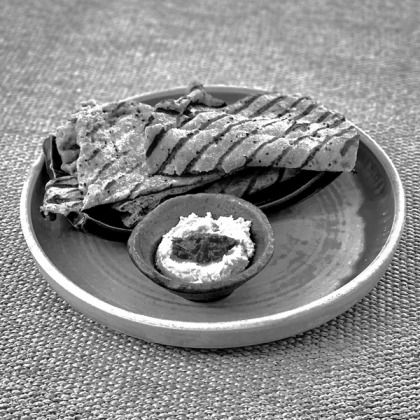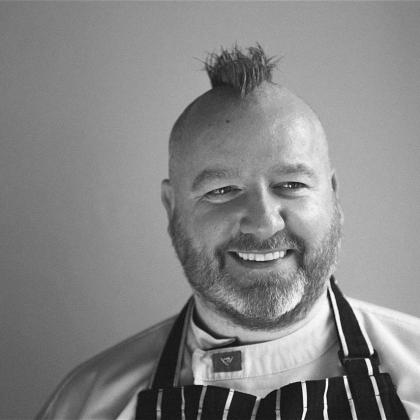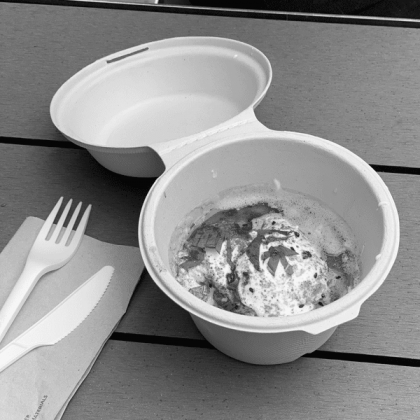New Year resolutions fail for a very simple reason: they are self-denying.
But, surely that is the point? Doesn’t there have to be a bit of Hades, a spot of self-mortification, in order to have a true resolution? Mustn’t the flesh be flailed, the guilt assuaged, before the pilgrim can make progress towards a new enlightenment?
In a word: no. We Irish are a Mediterranean people, albeit one who find ourselves a little more northerly in geographical locations than is absolutely ideal. Thereby, we are accidentally amidst Northern Anglo-Saxons who relish guilt, mortification, self-flagellation, and all that stuff.
But that stuff doesn’t suit us, and it certainly doesn’t suit us after a decade and more of the Celtic Tiger, where we have been happily living in Weimar-sans-Inflation since 1992.
So, forget the self-denying bit for the New Year, and turn instead to Best Practice. You don’t have to change your life – and waste a fortune at the gym you never go to and thereby feel guilty about. You just have to make some resolutions that introduce Holistic Best Practice to help you achieve wholeness. Without sweat. Without guilt. Without grief.
And wholeness in this case means Wholefoods. Specifically oats and rice. Specifically porridge oats, and brown rice.
Porridge Oats might seem much too quotidian a fare to induce epiphanous culinary moments, but if you get lucky, then revelation can hit you right in the taste buds as you have breakfast.
I remember once travelling with the novelist Howard Jacobson, working on a story, when Howard had a bowl of Macroom oatmeal for breakfast at Ballymaloe House. “And you must have it with cream and brown sugar”, ordered the kindly lady serving breakfast. So Howard forgot about his doctor’s orders and had the brown sugar and the rich, unctuous cream on top of the oatmeal.
“This is porridge?” he asked after one spoonful. “This is supposed to be health food? But this is magnificent!”
It happens just like that. What you expect to be penance food is suddenly revealed as a magnificent piece of culinary pleasure.
I experienced something similar in Eunice Power’s lovely Waterford B&B, Powersfield House, one morning, when staying there with my family. Eunice had laced the porridge with sesame seeds, raisins, linseeds and sunflower seeds. Made with the local Flahavan’s oatmeal, it was a porridge for the Gods, a Powersfield Powerhouse.
Mrs Power is quite an authority on making porridge into something delectable, as her recipes show. (see box).
“I am a complete believer in the power of porridge. It is grown and produced locally, and really suits our systems, it is natural for Irish people to eat porridge”, says Eunice.
Mrs Power uses Flahavan’s oatmeal, so I took a trip to little Kilmacthomas to see how they do things there. The mill sits by the side of the River Mahon, and today John Flahavan is the sixth generation of the family to run the business, a family firm that dates back to the late 1700’s.
Seventy years ago there were more than fifty millers of oatmeal throughout the country. Today, Flahavans and Odlums share the market between them, with a tiny slice left for Donal Creedon’s outstanding Macroom Oatmeal.
Most of the Flahavan’s oats are sourced from farmers who are growing within a 60 mile radius of the plant, so this is truly a local food. And it’s a particularly green factory also: they use water power from the river to drive a turbine, and they burn the shell of the oat that wraps around the precious kernel, with the resulting steam power used for cooking and drying the oats. “We actually use very little oil”, says John Flahavan.
Touring the factory, one is struck the by image of cascades: the cascading river that originated the whole process centuries ago, and the cascading kernels of oats as they undergo their processes of cleaning and cutting and cooking and drying, tumbling and tumbling, cascading finally into bags of jumbo, pinhead, organic and progress oats.
And just how well does porridge suit our systems, as Eunice Power suggests? ”There is a general consensus amongst nutrition experts and health care professionals that as a population we should be eating more whole grains and whole grain foods”, is how the U.K.’s Grocery Distribution working group on wholegrains has put the case. Yet we are slow to take up the message that has been clearly advocated since the health benefits of wholegrains were revealed in the early 1990’s. As John Noonan, who works for Flahavans puts it, oats bring with them “a big basket of benefits”. They are high in fibre, and we need more fibre. They are low-GI, and they take cholesterol out of the system, and we need less cholesterol. It hardly needs to be said that oats are also inexpensive, and modern oatmeal cooks in no time at all. So, here is a local, green, health-giving food that only takes 3 minutes in the morning to make. That’s Best Practice.
Another wholegrain that we need in our lives is brown rice. Of course, this glorious, health-filled food is ritually dismissed as the ultimate “hippy food”. But this denunciation only serves to prove what many of us, today, believe: the hippies were right, and they were years head of their time.
But, doesn’t brown rice take forever to cook? Isn’t it just too much hassle, too much time? How can you blend it into a time-poor modern lifestyle?
Well, you can try this recipe, what we call Brown’s Brown Rice, because the recipe is one included in the Tassajara Recipe Book, by Edward Espe Brown, published way back in 1985. It isn't quick, but it's the easiest thing on the block.
Mr Brown calls it “Properly Cooked Brown Rice”, but it should really be called “Simplicity Itself”. It’s not really a recipe; it’s more of a technique, and it never goes wrong.
What you do is take 1 cup of brown rice, add 2 cups of water, a decent pinch of salt and a knob of butter. Bring the water and rice to the boil, then cover the pan and turn the heat down to the lowest setting. Now, you leave it alone for one hour. “Watch tv, prepare other dishes for dinner, or do your yoga asanas, but Don’t Look In The Pot”, says Edward.
At the end of the hour, you will have sweet, nutty, light, toasty brown rice, all for the sake of two minutes preparation. And you will have a technique that gives you perfect brown rice, and all the healthfulness of wholegrains, without any effort, for the rest of your life. Best Practice once more, and not an iota of self-denial.
Powersfield Porridge Ideas
Creamy Cranberry and Orange Porridge with Toasted Granola
Make porridge using skimmed milk and add dried cranberries, a little grated orange zest and some maple syrup. When cooked, stir in whipped cream and top with toasted granola – delicious!
Mixed Seed Porridge - Omega 3 Boost
Soak the porridge oats with a mixture of seeds, such as pumpkin, sunflower, sesame and golden linseed. The seeds swell and are delicious when cooked in the porridge this way, add some goji berries or dried cranberries for an extra dimension .
Apricot & Walnut Porridge
Soak the porridge oats overnight with chopped dried apricots and some chopped walnuts
Cinnamon & Sultana Porridge
As above but use succulent sultanas and a teaspoon of ground cinnamon to taste. This is lovely served in the autumn with some stewed apple and thick Greek yoghurt.
Apple Muesli
4 cooking apples
2 tablespoons sugar
1 cinnamon stick
½ cup water
3 cups organic oatmeal
3 cups apple juice
To serve:
sprinkling of granola & natural yoghurt
Peel and core apples. Slice apples thinly, place in saucepan with sugar, cinnamon and ½ cup water. Cook to puree consistency. In a bowl add the apple juice to the oatmeal and stir. Add pureed apples to mixture. Allow to cool and refrigerate over night. Serve with natural yoghurt and a sprinkling of granola.
Toasted Oatmeal Granola
3 cups porridge oats ( I use Jumbo flakes) pinch of salt
½ cup chopped nuts
½ cup wheat germ
½ teaspoon grated nutmeg
½ tablespoon ground cinnamon
¼ cup sunflower oil
1/3 cup honey
Preheat the oven to 160°C. Toss the dry ingredients together. Add the oil and honey. Toss again to coat thoroughly and spread the mixture on greaseproof paper in your largest roasting tin. Bake until golden, turning every 10 minutes so it browns evenly, for approximately 30 minutes. When done, remove from oven and allow to cool. It will loose its stickiness and become crunchy. Store in an airtight container.
This is delicious with raspberry swirl yoghurt. To make raspberry swirl yoghurt, just mash a cup of raspberries with a fork and lightly ripple through Greek yoghurt.
www.powersfield.com
But, surely that is the point? Doesn’t there have to be a bit of Hades, a spot of self-mortification, in order to have a true resolution? Mustn’t the flesh be flailed, the guilt assuaged, before the pilgrim can make progress towards a new enlightenment?
In a word: no. We Irish are a Mediterranean people, albeit one who find ourselves a little more northerly in geographical locations than is absolutely ideal. Thereby, we are accidentally amidst Northern Anglo-Saxons who relish guilt, mortification, self-flagellation, and all that stuff.
But that stuff doesn’t suit us, and it certainly doesn’t suit us after a decade and more of the Celtic Tiger, where we have been happily living in Weimar-sans-Inflation since 1992.
So, forget the self-denying bit for the New Year, and turn instead to Best Practice. You don’t have to change your life – and waste a fortune at the gym you never go to and thereby feel guilty about. You just have to make some resolutions that introduce Holistic Best Practice to help you achieve wholeness. Without sweat. Without guilt. Without grief.
And wholeness in this case means Wholefoods. Specifically oats and rice. Specifically porridge oats, and brown rice.
Porridge Oats might seem much too quotidian a fare to induce epiphanous culinary moments, but if you get lucky, then revelation can hit you right in the taste buds as you have breakfast.
I remember once travelling with the novelist Howard Jacobson, working on a story, when Howard had a bowl of Macroom oatmeal for breakfast at Ballymaloe House. “And you must have it with cream and brown sugar”, ordered the kindly lady serving breakfast. So Howard forgot about his doctor’s orders and had the brown sugar and the rich, unctuous cream on top of the oatmeal.
“This is porridge?” he asked after one spoonful. “This is supposed to be health food? But this is magnificent!”
It happens just like that. What you expect to be penance food is suddenly revealed as a magnificent piece of culinary pleasure.
I experienced something similar in Eunice Power’s lovely Waterford B&B, Powersfield House, one morning, when staying there with my family. Eunice had laced the porridge with sesame seeds, raisins, linseeds and sunflower seeds. Made with the local Flahavan’s oatmeal, it was a porridge for the Gods, a Powersfield Powerhouse.
Mrs Power is quite an authority on making porridge into something delectable, as her recipes show. (see box).
“I am a complete believer in the power of porridge. It is grown and produced locally, and really suits our systems, it is natural for Irish people to eat porridge”, says Eunice.
Mrs Power uses Flahavan’s oatmeal, so I took a trip to little Kilmacthomas to see how they do things there. The mill sits by the side of the River Mahon, and today John Flahavan is the sixth generation of the family to run the business, a family firm that dates back to the late 1700’s.
Seventy years ago there were more than fifty millers of oatmeal throughout the country. Today, Flahavans and Odlums share the market between them, with a tiny slice left for Donal Creedon’s outstanding Macroom Oatmeal.
Most of the Flahavan’s oats are sourced from farmers who are growing within a 60 mile radius of the plant, so this is truly a local food. And it’s a particularly green factory also: they use water power from the river to drive a turbine, and they burn the shell of the oat that wraps around the precious kernel, with the resulting steam power used for cooking and drying the oats. “We actually use very little oil”, says John Flahavan.
Touring the factory, one is struck the by image of cascades: the cascading river that originated the whole process centuries ago, and the cascading kernels of oats as they undergo their processes of cleaning and cutting and cooking and drying, tumbling and tumbling, cascading finally into bags of jumbo, pinhead, organic and progress oats.
And just how well does porridge suit our systems, as Eunice Power suggests? ”There is a general consensus amongst nutrition experts and health care professionals that as a population we should be eating more whole grains and whole grain foods”, is how the U.K.’s Grocery Distribution working group on wholegrains has put the case. Yet we are slow to take up the message that has been clearly advocated since the health benefits of wholegrains were revealed in the early 1990’s. As John Noonan, who works for Flahavans puts it, oats bring with them “a big basket of benefits”. They are high in fibre, and we need more fibre. They are low-GI, and they take cholesterol out of the system, and we need less cholesterol. It hardly needs to be said that oats are also inexpensive, and modern oatmeal cooks in no time at all. So, here is a local, green, health-giving food that only takes 3 minutes in the morning to make. That’s Best Practice.
Another wholegrain that we need in our lives is brown rice. Of course, this glorious, health-filled food is ritually dismissed as the ultimate “hippy food”. But this denunciation only serves to prove what many of us, today, believe: the hippies were right, and they were years head of their time.
But, doesn’t brown rice take forever to cook? Isn’t it just too much hassle, too much time? How can you blend it into a time-poor modern lifestyle?
Well, you can try this recipe, what we call Brown’s Brown Rice, because the recipe is one included in the Tassajara Recipe Book, by Edward Espe Brown, published way back in 1985. It isn't quick, but it's the easiest thing on the block.
Mr Brown calls it “Properly Cooked Brown Rice”, but it should really be called “Simplicity Itself”. It’s not really a recipe; it’s more of a technique, and it never goes wrong.
What you do is take 1 cup of brown rice, add 2 cups of water, a decent pinch of salt and a knob of butter. Bring the water and rice to the boil, then cover the pan and turn the heat down to the lowest setting. Now, you leave it alone for one hour. “Watch tv, prepare other dishes for dinner, or do your yoga asanas, but Don’t Look In The Pot”, says Edward.
At the end of the hour, you will have sweet, nutty, light, toasty brown rice, all for the sake of two minutes preparation. And you will have a technique that gives you perfect brown rice, and all the healthfulness of wholegrains, without any effort, for the rest of your life. Best Practice once more, and not an iota of self-denial.
Powersfield Porridge Ideas
Creamy Cranberry and Orange Porridge with Toasted Granola
Make porridge using skimmed milk and add dried cranberries, a little grated orange zest and some maple syrup. When cooked, stir in whipped cream and top with toasted granola – delicious!
Mixed Seed Porridge - Omega 3 Boost
Soak the porridge oats with a mixture of seeds, such as pumpkin, sunflower, sesame and golden linseed. The seeds swell and are delicious when cooked in the porridge this way, add some goji berries or dried cranberries for an extra dimension .
Apricot & Walnut Porridge
Soak the porridge oats overnight with chopped dried apricots and some chopped walnuts
Cinnamon & Sultana Porridge
As above but use succulent sultanas and a teaspoon of ground cinnamon to taste. This is lovely served in the autumn with some stewed apple and thick Greek yoghurt.
Apple Muesli
4 cooking apples
2 tablespoons sugar
1 cinnamon stick
½ cup water
3 cups organic oatmeal
3 cups apple juice
To serve:
sprinkling of granola & natural yoghurt
Peel and core apples. Slice apples thinly, place in saucepan with sugar, cinnamon and ½ cup water. Cook to puree consistency. In a bowl add the apple juice to the oatmeal and stir. Add pureed apples to mixture. Allow to cool and refrigerate over night. Serve with natural yoghurt and a sprinkling of granola.
Toasted Oatmeal Granola
3 cups porridge oats ( I use Jumbo flakes) pinch of salt
½ cup chopped nuts
½ cup wheat germ
½ teaspoon grated nutmeg
½ tablespoon ground cinnamon
¼ cup sunflower oil
1/3 cup honey
Preheat the oven to 160°C. Toss the dry ingredients together. Add the oil and honey. Toss again to coat thoroughly and spread the mixture on greaseproof paper in your largest roasting tin. Bake until golden, turning every 10 minutes so it browns evenly, for approximately 30 minutes. When done, remove from oven and allow to cool. It will loose its stickiness and become crunchy. Store in an airtight container.
This is delicious with raspberry swirl yoghurt. To make raspberry swirl yoghurt, just mash a cup of raspberries with a fork and lightly ripple through Greek yoghurt.
www.powersfield.com






